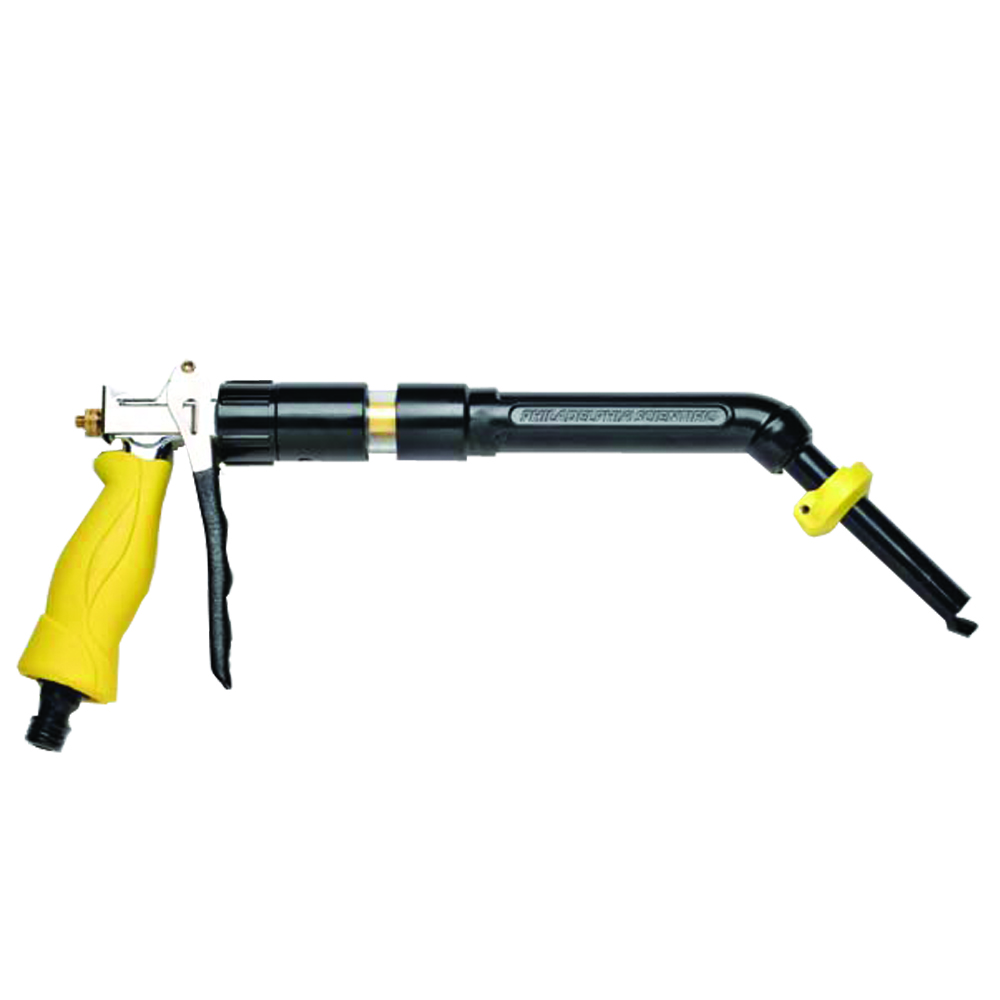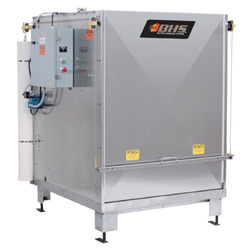We use cookies to make your experience better. To comply with the new e-Privacy directive, we need to ask for your consent to set the cookies. Learn more.
Sustainable Forklift Fleets: Save Energy on Core Material Handling Tasks
Electric lift trucks are the best choice for green warehousing operations working to build a sustainable forklift fleet. But not all electric forklift fleets are equally green, and going electric is not a guarantee of sustainability. The switch from diesel or propane to electric lift trucks is a terrific first step in the effort to reduce a warehouse's carbon footprint, but there's still more that you can do to limit energy requirements — and the associated electricity costs — while still providing all the material handling capacity you need to keep a warehouse running all year round.
The planet isn't the only thing that benefits from environmental sustainability in the supply chain, either. The simple fact is that electric forklift fleets are cheaper to operate and maintain than their diesel and propane counterparts. They might have a slightly higher up-front costs, but over time, electric fleets provide tremendous savings compared to other types of forklifts.
R&D group Electric Power Research Institute compares cost-of-ownership between types of lift trucks with their Lift Truck Ownership Cost Comparison calculator. According to their figures, a 5,000-pound capacity electric forklift operating for a full shift five days a week, 52 weeks per year, would save $26,926 over a similar diesel vehicle in just six months. Compared to a propane forklift, the electric model would save $36,656 in the same timespan, despite the relatively higher capital cost of an electric lift truck.
In order to maximize these operational savings, and run a greener material handling operation overall, consider the following.
Understand the Upstream Environmental Impacts of Electric Forklift Technology
When environmental engineers study a given technology or system, they often start with a study called a life-cycle assessment. The goal of this interpretive tool is to create a clear, fact-based picture of the study object's total environmental impact, from upstream extraction of raw materials through to downstream effects, including air emissions and effluents released into water.
Applying this strategy to an electric lift truck fleet, a number of hidden environmental costs come to the surface, particularly in upstream energy production. Electric forklifts run without emissions, it's true. But that doesn't make them entirely carbon neutral. After all, the power source for today's electric counterbalance lift trucks is a battery, and batteries need electricity to recharge.
This creates upstream sustainability challenges, from carbon emissions associated with coal-fired power plants to water pollution from natural gas extraction through hydraulic fracturing. Depending on the energy source of a facilities electricity provider, these upstream costs can vary wildly:
- Coal-fired power plants release a wide range of pollutants into the air, including soot, mercury, sulfur dioxide, and nitrogen oxides. They also release heat-trapping greenhouse gases; burning coal releases carbon dioxide into the atmosphere, while coal mining exposes pockets of methane, accounting for about 10 percent of all methane emissions in the United States in 2014.
Coal has been on the decline since 2001, and now accounts for just 30 percent of the U.S. power grid, with about 400 coal-fired power plants in the country.
- Natural gas burns much more cleanly than coal. Newer natural gas electric plants are responsible for 50 to 60 percent less carbon dioxide than coal-burning facilities. This is part of the reason why natural gas surpassed coal in 2016 as the top fuel-source for American energy, providing 34 percent of the country's electricity with 1,793 plants in 2017.
However, there are some sustainability issues involved in natural gas extraction. Drilling and pipeline travel are associated with methane leakage, and extraction through hydraulic fracturing has led to ground-water contamination with used fracking fluids.
- Nuclear power plants don't emit carbon dioxide or other forms of air pollution, making them an incredibly green option at first glance. There are essentially two environmental risks associated with nuclear energy, though. First, it takes a lot of energy to mine and refine uranium. Perhaps more troublingly, nuclear plants also introduce the problem of how to safely dispose of radioactive waste materials that can remain dangerous to life for thousands of years after use.
With just 61 nuclear plants in the U.S. in 2017, this energy source provided 20 percent of the country's electricity.
- Renewable energy sources are on a growth trend globally. These technologies include wind, water, and solar energy, which do not use limited fossil fuels and avoid greenhouse gas emissions. As of 2017, though, these three types of renewables only accounted for about 14 percent of U.S. energy output.
As part of an environmental life cycle assessment, forklift fleet managers should consider the fuel source that generates the electricity required to charge lift truck batteries. The U.S. Environmental Protection Agency offers a Power Profiler tool that can tell users what fuel mix powers their operations, as well as quantities of air emissions associated with this use of electricity.
Regardless of the fuel source that powers the fleet, though, there are ways to improve energy efficiency, reducing overall usage. Unsurprisingly, the key to lowering the energy requirements of a forklift fleet start with forklift batteries.
Invest in Forklift Battery Maintenance and Management Systems
Lead-acid forklift batteries provide years of service, but the very chemical reactions within them that produce power can also lead to diminished capacity over time. This can require more frequent charging, increasing electricity usage in the battery charging room.
In order to get the most service out of each and every forklift battery, follow all manufacturer recommendations for ongoing maintenance, and use a reliable fleet management system. Start with these tips:

Figure 1. The BHS Water Gun makes watering forklift batteries more ergonomic and efficient
- Stick to Strict Battery Watering Schedules. Flooded lead-acid batteries create energy with a chemical reaction between the acid/water electrolyte and lead plates. Both charge and discharge cycles create heat in addition to energy, and heat evaporates water. This causes sulfuric acid proportions to increase and can even leave lead plates exposed to the air, causing oxidation.
- Install Smart Chargers. The newest generation of forklift battery chargers is equipped with heat monitors that can slow or even temporarily halt the charge cycle when it detects that a battery is heating up too much. As stated, heat evaporates water, potentially leading to oxidation of the plates and permanent, irreversible capacity loss.

Figure 2. The BHS Battery Wash Cabinet (BWC) cleans harmful contaminants from a battery’s surface, which extends the life of the battery and reduces electrical problems in lift trucks.
Most heat and battery gassing occurs during the last fifth of the total charge. Smart chargers monitor this stage carefully, easing the battery through without subjecting it to too much heat or stress.
- Wash Forklift Batteries Regularly. Many lift truck battery warranties require that end users keep batteries clean and free of corrosion. This is easier said than done; during normal usage, electrolyte can slowly seep onto battery cases and terminals. Not only does this conductive sludge increase self-discharge it can also corrode the terminals, creating electrical problems in lift trucks and eventually threatening the work life of forklift batteries.
Depending on usage, battery room operators should wipe down battery cases with an acid neutralizing spray called AcidSafe Liquid monthly or even weekly. At least once a year, users should fully wash all forklift batteries in an automated Battery Wash Cabinet or a Roller Wash Station, which collects the hazardous runoff from battery washes for safe, legal disposal.
- Improve Battery Efficiency with Fleet Management Systems. Without a dedicated fleet management system like Fleet Tracker, battery room operators can find it difficult to comply with complex maintenance schedules. Fleet Tracker provides reminders for key maintenance tasks while also tracking each battery's usage, instantly leading operators to batteries that are fully charged, with completed cooling cycles.
This prevents operators from over-utilizing certain batteries and underusing others, keeping the entire battery collection in optimal condition. Fleet Tracker even reduces the time required for a battery change and gives managers detailed reports so they can respond to energy-draining battery problems quickly.
This is a major cause of capacity loss in forklift batteries. The solution is to check battery cells at least weekly, after the equalization charge, for instance. Only water cells that are low, typically to about a quarter inch above the top of the plate. Note that technicians should only water batteries after the charge and a full cool-down cycle.
Water Carts, Water Guns, and even fully automated Integrated Watering Systems can improve accuracy and efficiency during battery watering tasks.
Well-maintained batteries operate more efficiently, ultimately using less electricity during the charging process. Across an entire fleet, this can add up to considerable energy savings. Even renewable energy sources have some environmental footprint; manufacturing solar panels and wind turbines requires natural resources and energy, too. The most ecologically responsible approach is to limit energy needs as well as transitioning to renewables — and battery maintenance is a key part of creating a truly sustainable forklift fleet.
References:
Batterman, Stuart. "Life-Cycle Assessment and Environmental Engineering." ASCELibrary. Journal of Environmental Engineering, Nov. 2004. Web. 12 Mar. 2018.
Bond, Josh. "How lift truck fleet managers can improve efficiencies and reduce costs." MMH. Peerless Media LLC, 1 May 2012. Web. 26 Feb. 2018.
Bond, Josh. "Power Options: The hunt for operational efficiencies." MMH. Peerless Media LLC, 1 Jan. 2013. Web. 26 Feb. 2018.
"Coal and Air Pollution." UCSUSA. Union of Concerned Scientists, n.d. Web. 12 Mar. 2018.
Kickham, Victoria. "Three ways to extend the life of your forklift batteries." DCVelocity. Agile Business media, LLC, 28 June 2017. Web. 26 Feb. 2018.
"Lift Truck Comparison with Capital Costs." EPRI. Electric Power Research Institute, n.d. Web. 26 Feb. 2018.
Muyskens, John, Dan Keating, and Samuel Granados. "Mapping how the United States generates its electricity." WashingtonPost. The Washington Post, 28 Mar. 2017. Web. 12 Mar. 2018.
"Power Profile." EPA. U.S. Environmental Protection Agency, 1 June 2017. Web. 12 Mar. 2018.
Tollefson, Jeff. "Methane leaks erode green credentials of natural gas." Nature. Macmillan Publishers Limited, part of Springer Nature, 2 Jan. 2013. Web. 12 Mar. 2018.
Categories: Batteries, Chargers, Environmental, Maintenance, Wastewater
Tags: Sustainability, forklifts, forklift batteries, forklift battery maintenance, battery wash equipment, forklift fleet management, environmental, green warehousing

